Let’s imagine you wish to discover how to create purple paint or purple food coloring. You’ll need to be able to blend colors! But how do you get started? What hues combine to form purple?
To learn how to produce purple, you need to have a grasp of the science of color mixing. Everything you need to know about using colors to create purple will be covered in this post.
A Brief History of the Purple Hue: The Color of Royalty

Since the first people mashed up various berries to create the first pigments, colors have been an essential aspect of human history. Therefore, color is considerably more than just a collection of certain lightwave frequencies. Every hue contains a combination of cultural and historical significance, and we think that knowing this history can help you incorporate it into your artwork. Purple has always been a favored hue of royalty since it is both expensive and rare.
Purple Color: Tyrian
During the Neolithic era, thousands of years ago, the color purple first gained popularity. In addition to manganese powder, archaeologists have found artworks that were made with hematite powder. Tyrian is a rich purple pigment that was extracted from the mucus of a particular type of Mediterranean snail before being treated in a very time-consuming and expensive way. Because of this, purple-colored clothing was costly and exclusively worn by the elite.
Purple in China
The ancient Chinese produced their colours using the purple gromwell rather than the Mediterranean snails. The resultant purple dye was highly pricey and stuck to the cloth very poorly. Purple was quite fashionable at this time and its already inflated price increased since the monarch of the Qi kingdom loved it so much.
Colors were given a hierarchy of propriety and value in ancient China. For a very long time, purple was not as revered as crimson since the fundamental colors were prized more highly. But by the sixth century, purple had become more often used than red.
The Color Purple Through the Middle Ages and During the Renaissance
Church leaders and the clergy have traditionally worn tyrian purple. Tyrian purple should no longer be worn by cardinals, according to Pope Paul II, who made the announcement in 1464. Instead, red robes were instituted. Lower-class church officials wore poorer clothing that was initially indigo blue colored and then coated in crimson made from kermes dye (a dye obtained from an insect that is found in the Mediterranean).
The Virgin Mary was frequently seen dressed in purple garments. Less royalty wore purple at this period, but more academics and students—particularly those studying religion—started donning the hue. Purple started to be seen or linked to knowledge and wisdom at this point.
Purple in the 18th and 19th Centuries
Throughout the whole 18th century, monarchy, members of the nobility, and Christians continued to wear purple as the color of the privileged. This started to alter in the 19th century. The first synthetic aniline dye was produced as a result of experiments carried out by a British chemistry student who was attempting to produce synthetic quinine. Mauveine, or mauve, was the name given to this new purple hue.
With Queen Victoria donning a mauve silk robe, the new purple hue immediately gained popularity. Prior to the creation of this new synthetic colour, only extremely wealthy people wore purple clothing. The hue became widely accessible thanks to new industrial manufacturing techniques, and this dye was among the first to fully transform the chemical and fashion sectors.
What Two Colors Make Purple?
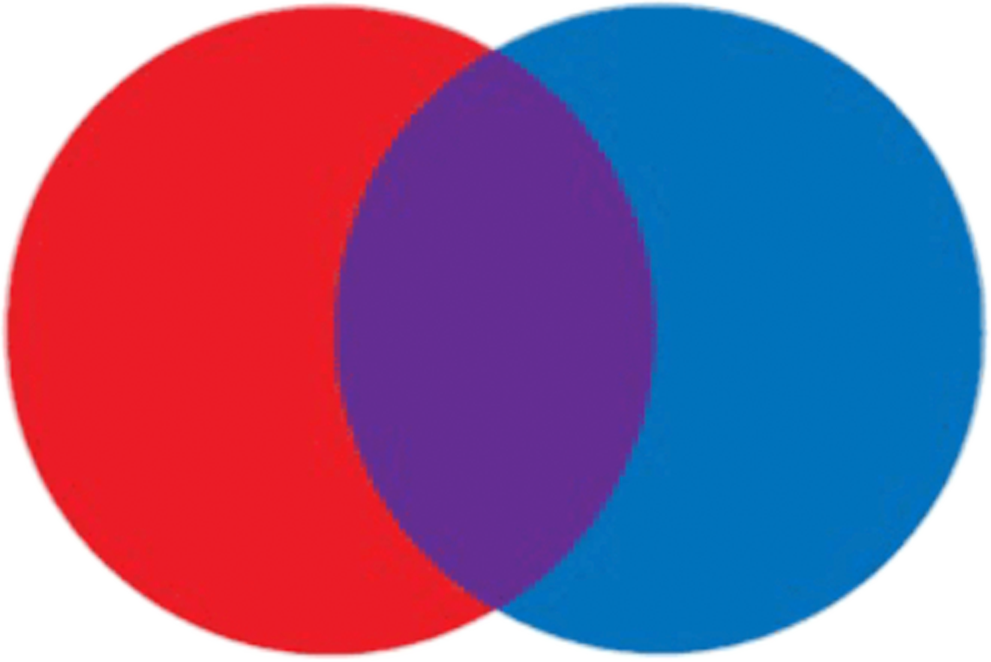
Purple blends appear to be as simple to combine as red and blue pigments at first glance. But it’s not that easy, as with everything in life. Before we even pick up the paint tubes, there are a few things we need to consider. What shade of purple are you seeking? Which color would you prefer—a vivid violet or a subdued aubergine? Does your selected purple need to be created in both highlight and shadow tones? We will eventually provide answers to each of these queries, but let’s start from the very beginning.
Pure, primary purple is produced when pure, primary blue and red are combined. Purple is a secondary color, much as orange and green. Using a color mixing chart may be quite beneficial if you are new to painting. The color that is between the two opposed hues on the color wheel can be made by combining them. In this instance, merging the antithetical colors of red and blue will result in the middle hue of purple.
If only it were so easy to produce the ideal shade of purple, we would end this essay right here. Sadly, color theory may become rather more intricate. We need to start taking the color temperature into account if you want to start blending various purple hues. Color temperature appears to be equally straightforward. Oranges and reds are warm colors, but cold colors like blues and greens are. But even within these groups, there are reds that are colder than others and blues that are warmer than others.
Because they include a little amount of blue pigment, cooler reds tend to tilt more towards purple hues. Warm reds, on the other hand, naturally lean towards orange since they contain some yellow. Color bias is the propensity of some colors to lean toward others; in order to generate precise hues, you must be aware of color bias. The characteristics of your purple hue will be directly influenced by the temperature differences between your two base colors, red and blue.
What Colors to Mix to Make Purple Muted?
A vivid, deep purple might not be something you constantly desire. Muted colors are a crucial component of every painting because they let strong colors stand out. Knowing which colors make purple muted enables you to mix and produce various hues of muted colors.
How to Mix Muted Colors Using Complementary Colors
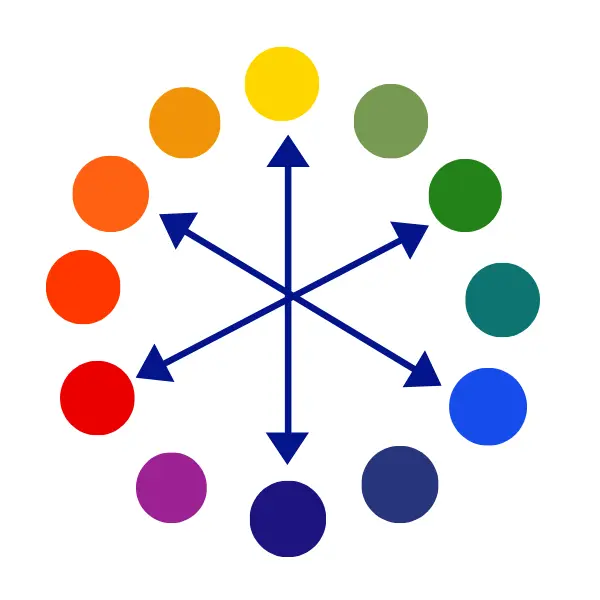
By combining a color with its complimentary color, muted hues can be produced. View the color wheel down below. The complementary hues are those that stand in opposition to one another. Red is the complimentary color of green, while yellow is the complementary color of purple, for instance.
As a result, we will combine purple with yellow to create a subdued purple color because yellow and purple are complimentary colors. You may blend several shades of purple and yellow together as seen in the combinations below. To produce numerous muted purple hues in different tones. Although the complimentary color wheel is used here, there are many more varieties of the color wheel for artists, therefore it is important to master and comprehend its subtleties.
Mixing Purple and Yellow to Make Muted Shades of Purple
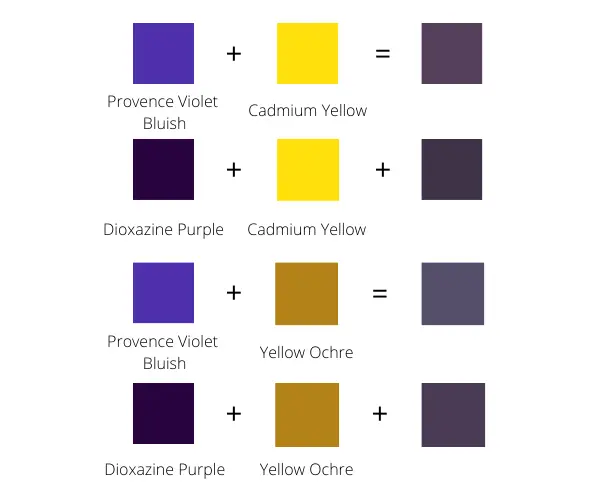
Yellow ochre produces a more earthy toned purple when combined with either Provence Violet Bluish or Dioxazine Purple than when used with Cadmium Yellow. Of course, the Provence Violet Bluish-created muted purple is lighter than if it were combined with Dioxazine Purple.
For making a subdued purple, you are not restricted to using the hues shown in the color chart. You may combine various purple hues that you create on your own with whatever type of yellow you choose. Cadmium Lemon Yellow, Hansa Yellow, and any other yellow you might have on hand are other alternatives for yellows.
How to Make Dark Purple Color
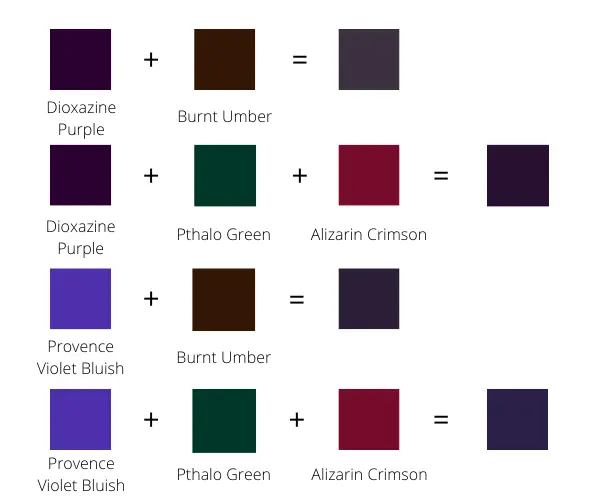
Because they are typically already deeper hues, purples may produce excellent dark colors. There are fantastic methods for achieving even deeper hues of purple, though! The table below demonstrates which colors, when combined with other dark hues, make purple appear darker.
A lovely subdued dark purple hue is produced when purple and burnt umber are combined. Additionally, because burned umber is warmer than purple in temperature, the purple becomes a little bit warmer. A dark black hue is created when Pthalo Green and Alizarin Crimson are combined. Therefore, if you combine this color combination with purple, the result is an extremely dark purple hue. You can definitely mix up a darker shade of purple than this one for yourself.
Next, you may combine dark purple hues with lighter purple hues like Provence Violet Bluish. Provence Violet Bluish will produce a lighter purple than Dioxazine Purple, so bear that in mind. However, as seen in the color chart, you may still use it to create a dark purple color.
How to Make Light Shades of Purple

As was previously indicated, many purples have a darker value. Therefore, you will surely encounter situations when you’ll need to know how to create a lighter shade of purple on your own. White would be the logical color to add to purple to make it lighter. When combined with white, Dioxazine Purple and Provence Violet Bluish may be distinguished from one another.
How to Make Light Purple with Yellow
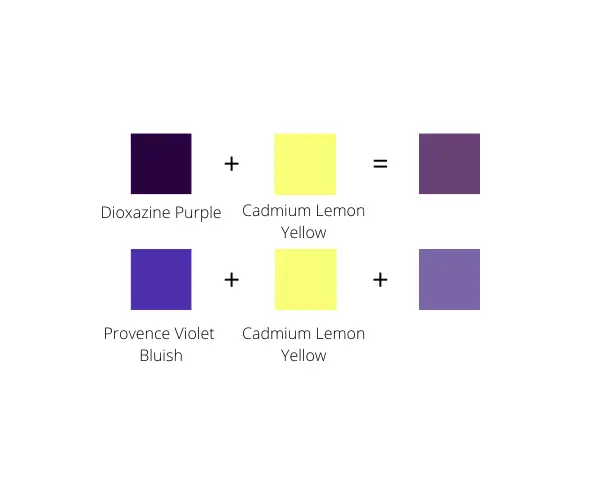
You only need to combine a color with another color whose value is lighter to make it lighter. In other words, there are more plausible options for whitening purple than just white. Yellow would be that color. As previously mentioned, yellow may also be utilized to mute purple. Purple will, however, become lighter when combined with a pale yellow. Therefore, if you need to lighten and muffle a purple, this mixture may be useful.
In the aforementioned color chart example, purple is lightened using Cadmium Lemon Yellow. When contrasted to Cadmium Yellow, this yellow is significantly paler. Although it won’t be as light as when combined with Cadmium Lemon Yellow, you may also brighten purple with cadmium yellow.
How to Mix Earth Tone Shades of Purple Color
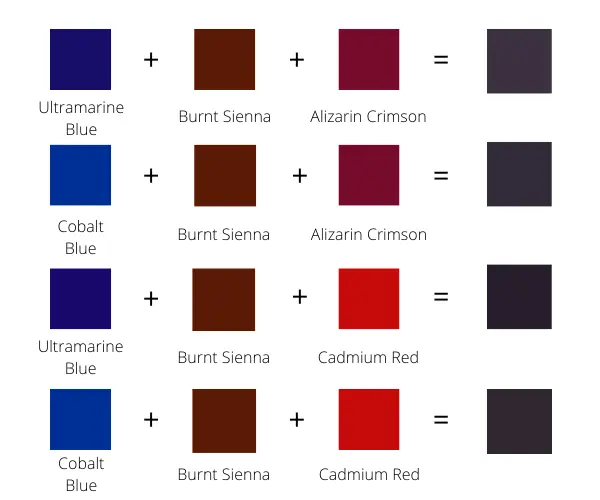
Do you enjoy earthy tones? They are an excellent alternative to blending purple with its complimentary color, yellow, and may create beautiful shades of purple. The color chart below shows how Burnt Siena and Blue (Cobalt Blue and Ultramarine Blue) may be combined to make purple. But simply combining blue and Burnt Sienna is insufficient to get a powerful purple. Therefore, I advise adding a small amount of Cadmium red or Alizarin crimson to the mixture.
Purple and Violet: What’s the Difference?
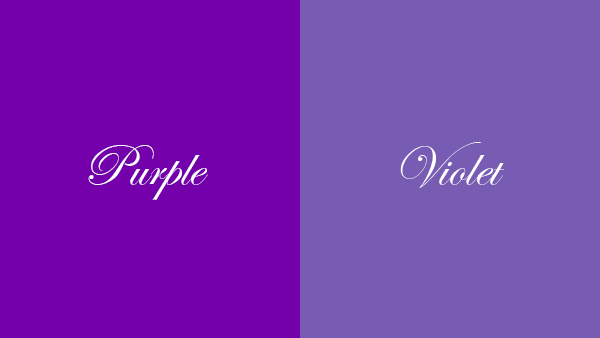
You’ve undoubtedly spotted violet appear on the color wheel when trying to create purple. The two are actually quite distinct colors that some people mistakenly think are the same.
The most glaring distinction between them is that violet belongs within the electromagnetic spectrum whereas purple does not. In actuality, violet has the smallest visible light wavelength that the human eye can perceive. Purple is a modified color since it requires the blending of two other colors to achieve. Additionally, violet is more often a balance of red and blue than it is a color with an equal amount of each.
Tips for Using Different Shades of Purple in Your Painting

Using purple in your artworks is a great idea. Purple may be used with a variety of other hues to create stunning purple compositions. The other colors in a painting might stand out more when purple is used as a complementary hue. Your creativity and openness to trying new things are your only limitations when it comes to blending your own purple tones and selecting your color schemes.
Precautions to Creating Purple
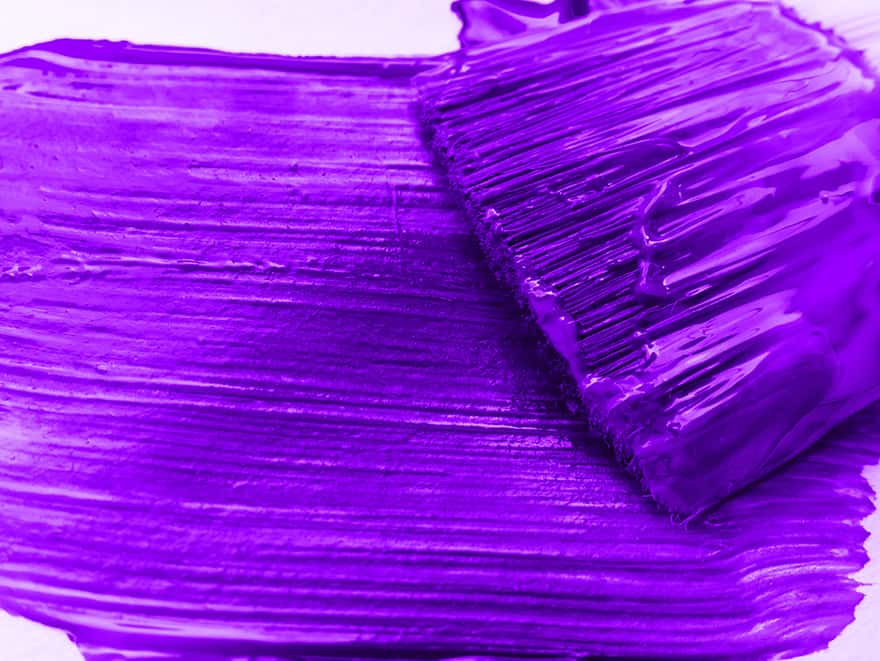
Reiterating some of our earlier points, generating purple is straightforward, but you should be aware of whether you want genuine purple or a range of purple hues because this will affect the color combinations you require.
Once you have purple, you may utilize it to explore the range of tones from lighter to darker. Just be careful not to combine too many colors at once. As a result, you can blot away the purple and end up with a totally other shade.
This is particularly true when employing white or black, both of which, when used excessively, can obscure purple.
Therefore, you may begin with the straightforward strategy of blending a strong red with a decent blue to arrive at your dominant purple color. You have a plethora of options after that.
